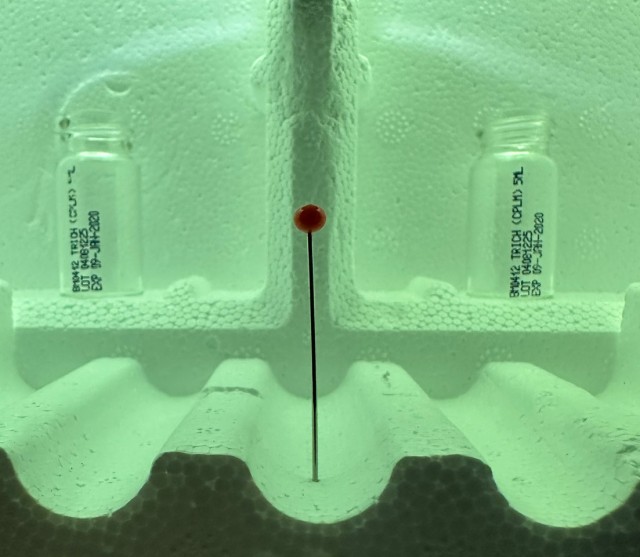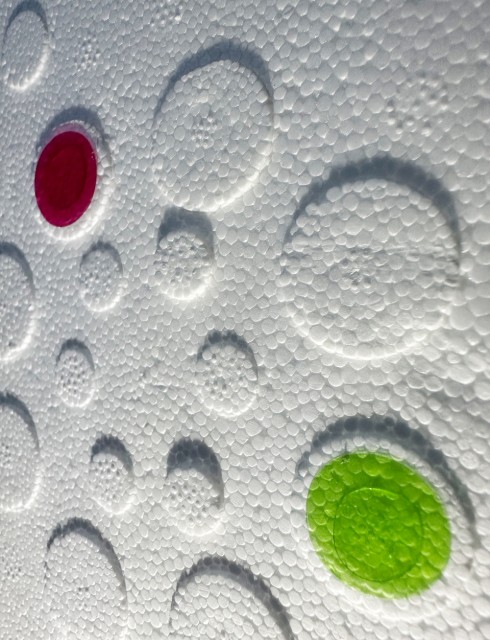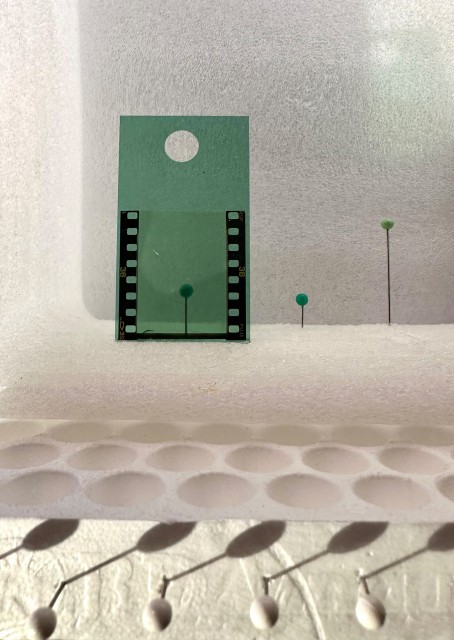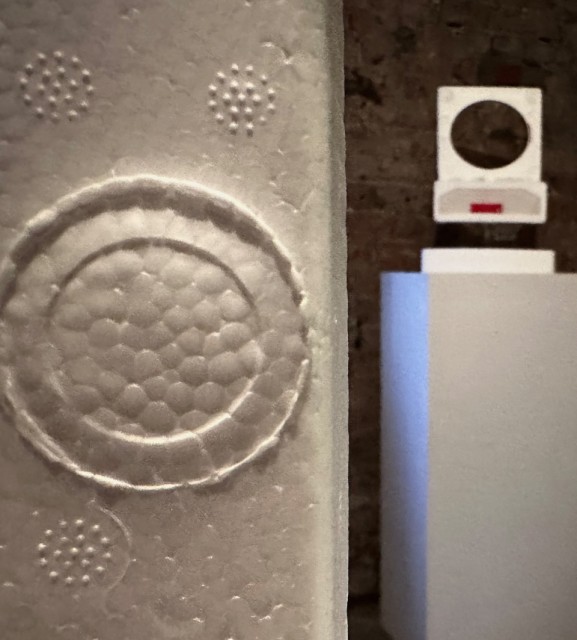Susan Leask: New Sculptures

“I’m probably unaware of how much of myself I’m giving away.” Jon Barraclough speaks with artist Susan Leask ahead of a new exhibition of her sculptural works at Liverpool’s Bridewell Studios & Gallery…
It’s 1996 and I’m in the chilly, labyrinthine basement of a Georgian house in Liverpool’s Huskisson Street. Together with other artists, Sue Leask established the ‘Basement’ as an artist-run international exhibition and residency space. If you think this was messing around in a cellar, think again.
Her installations there were not simply her art in a room. They took over the brick-lined spaces with a profound completeness. Every part of the space becoming so much a feature of the sculptural works that I could think of no better venue to see them. Light, material, reflectivity, surface and form combined to transform each zone of the multi-roomed cellar with fabulous attention to detail. Made from re-purposed, found or household objects such as soil, ceramic bowls, mirror board, fabrics and lamp holders, her sculptures evoked unsettling ideas about confinement, control and transformation.
I returned there a few months ago to see what Leask was working on as she prepared for her forthcoming solo show at The Bridewell Studios & Gallery.
Since graduating from the former Liverpool Polytechnic (in 1985), Sue Leask has produced work in an extraordinary variety of materials for both indoor and outdoor locations, in traditional galleries and museums, and in more unusual locations such as underground bunkers, monasteries, basements, attics, ponds, World Heritage Sites, and even at sea – on a tall ship. Sue focuses on the playful exploration of space, location, history and context, constructing detailed, carefully crafted, often minimal and always elegant interventions. How would such site-specific work transfer to a gallery space?

She is a hoarder of all sorts and the semi-underground rooms show evidence of this – although, at first sight, her new perfect and idiosyncratic sculptures hide the fact that they are all carefully made from repurposed waste materials.
As she explains: “The packaging I’ve repurposed is widely used in healthcare, protecting fragile, often sterile, essential items. The white boxes provide a blank canvas on which I can begin to experiment, transform and configure sculptures and wall-based works.”
Once used to protect delicate medical products these now stand exposed, unprotected, fragile and precarious in their totem-like forms. As I step around them I’m aware that they could be so easily disturbed and damaged. I decide to take my rucksack off. A key structural material is EPS; a polystyrene and polyethylene foam that is increasingly becoming a single-use item and rarely recycled due to cost.
“Polystyrene is not the most obvious material to build sculpture from and is miles away from being traditional. But I use unconventional materials in the making of many of my artworks. I work part-time in the NHS and through that have had access to these boxes and packaging that protect or keep certain products safe and sterile within the clinical environment.”
Smaller objects like dressmaker’s pins, transparencies, sample-sized coloured gels and coloured wire are sparingly added providing compelling, minimalist colour to the clinical white. Rows of pins provide purposeful interruptions to the polystyrene surfaces. There’s a playful sense of discovery and encounter, as she explains: “I carefully place small items urging the viewer to look more closely. Some are unrecognizable from their original purpose, others hint at stories, thoughts and places.”

And there are lots of them, all different but all in some way speaking with one another in a common language. Plastic glasses and cardboard inner-tubes are configured to provide the sculptures height, stability, and grace. They can (and should) be viewed both individually and collectively and their positioning at the Bridewell might remind us of a theatre set, a theme that has recurred in Sue’s previous installations over the years.
The wall-based works are also repurposed – this time from previous shows. Here, materials are no less key to the pieces, using things like plaster from an installation and fragments of photographs from an exhibition.
“I’ve drawn and scratched snippets of text into the surface of the plaster, photographs are sliced up and attached to the ply or plaster, tissue paper half covers an image from a Tarkovsky film in homage to the filmmaker. Words from a poem in Shetland dialect sit within a nautical chart drawn into the plaster.
“Yet another pays homage to the painter Hammershoi. The drawings are small works, A5 sized, and drawn using graphite with small samples of coloured gel, or exposed film incorporated into them. Again some pay homage; for example to Yoko Ono, Robert Smithson, Czech Cubist Architecture while others are a series of images of myself in shadow in various locations.”
I could see that drawing is an important part of Sue’s practice and in recent years she has focused on the use of fine point, graphite pencil and/or ink on paper. Mark-making is used painstakingly to build up abstract or representational images both large and small. Some of the fastidiousness of approach, is like collecting marks, like the collections of objects in the sculptures. I wondered if this work had an autobiographical dimension.
“Although my work is generally not autobiographical, work made during a residency in Shetland (my father’s home) could be described as such. Also the series of small drawings with me in shadow in various locations references me – but it’s my interest in the resulting image that’s of more importance. I guess elements of self enter the works in the making and selection process and I’m probably unaware of how much of myself I’m giving away.”

Collecting, hoarding, considering, repurposing and reconstructing clearly lead Sue through a sculptural process that is satisfyingly replayable when standing before them. There are intriguing shapes and spaces within these polystyrene forms and the opportunities for making minimal additions and lighting effects are exploited with careful consideration and wit.
My guess is that we haven’t seen the last of these objects and images; they will almost certainly reappear, in new ways, in Sue’s future work.
Jon Barraclough
Would You Land an Airplane There? Susan Leask: New Sculptures, 16-21 May @ Liverpool’s Bridewell Studios & Gallery





